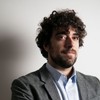PAOLO BORSELLINO DURING THE FUNERAL OF BIAGIO SICILIANO, A 14-YEAR-OLD STUDENT KILLED IN A TRAGIC CAR ACCIDENT BETWEEN A DRIVER WHO LOST CONTROL AND THE CONVOY ESCORTING THE MAGISTRATE THROUGH THE CITY. IN THE FOLLOWING DAYS, 17-YEAR-OLD GIUDITTA MILELLA DIED OF HER INJURIES, TOO.
Salvatore Marino's body, found in the San Erasmo Neighbourhood.
Inside the bunker courthouse of the Maxi trial, the 10th of February, 1986.
Student protest against the mafia.
A protest organised by newly-fired construction workers. The sign reads: “DON’T BE SURPRISED IF WORKERS SUPPORT THE MAFIA. 'EARLIER' WE HAD A JOB. NOW, WITH THESE 'CLEAN' INSTITUTIONS, WE’RE UNEMPLOYED.”
Crowd in the public housing neighbourhood of Lo Sperone, looking onto the murder scene of Giacomo Conigliano, a Mafisio close to Michele “THE POPE” Greco, who was indicted in the Maxi trial.
A drug bust in 1986. The product was coming from Bankok and was seized from a trusted person of the Brancaccio Clan.
Inside the newsroom of L'ora in Palermo. The 29th of January, 1988.
